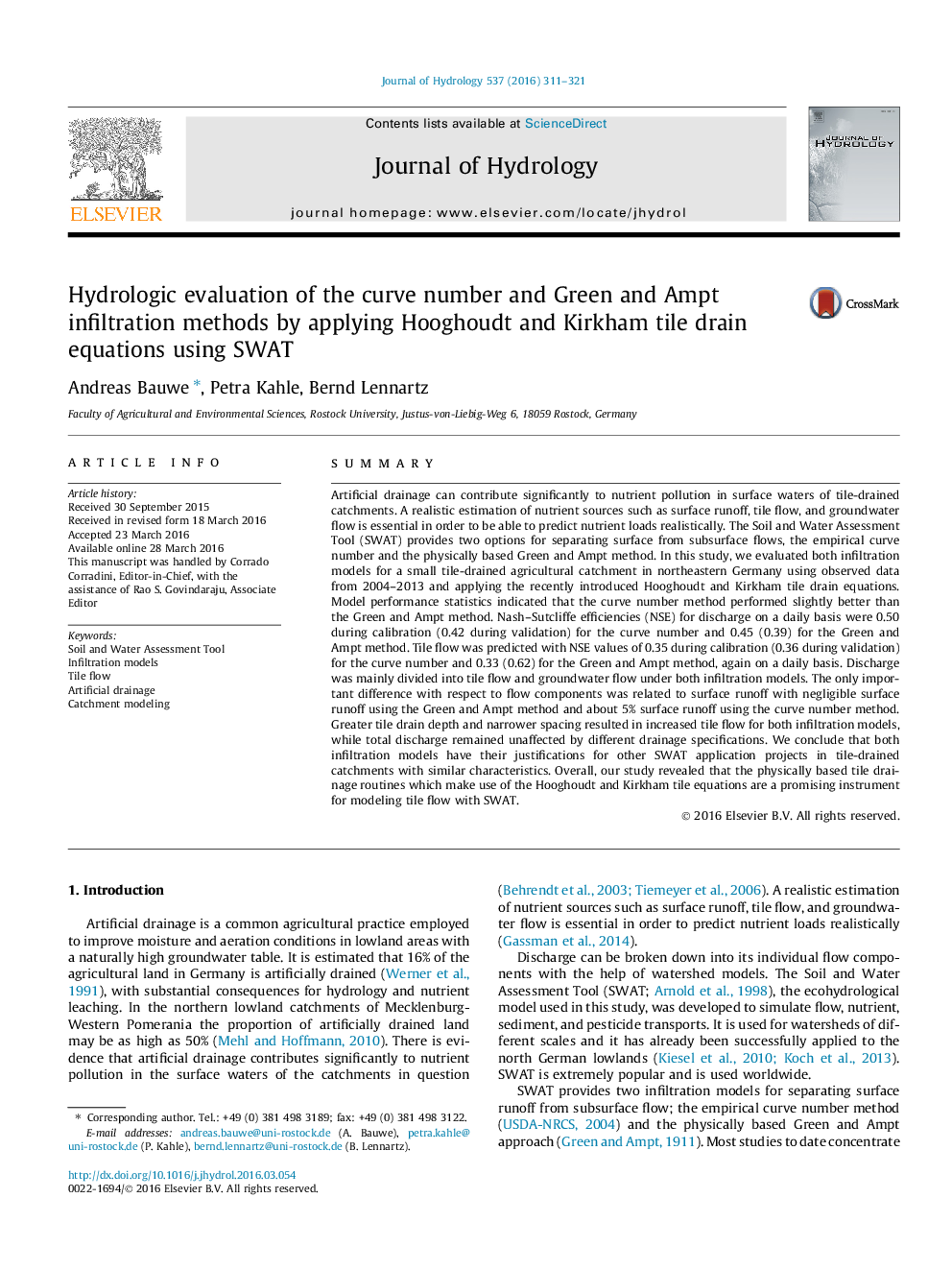| کد مقاله | کد نشریه | سال انتشار | مقاله انگلیسی | نسخه تمام متن |
|---|---|---|---|---|
| 6409803 | 1629915 | 2016 | 11 صفحه PDF | دانلود رایگان |

- Two infiltration methods were tested in a tile-drained catchment using SWAT.
- Recently introduced Hooghoudt and Kirkham tile drain equations were applied.
- Curve number method performed slightly better than the Green and Ampt method.
- Tile flow was predicted reasonably by both infiltration methods.
- Hooghoudt and Kirkham tile equations are suitable for modeling tile flow using SWAT.
SummaryArtificial drainage can contribute significantly to nutrient pollution in surface waters of tile-drained catchments. A realistic estimation of nutrient sources such as surface runoff, tile flow, and groundwater flow is essential in order to be able to predict nutrient loads realistically. The Soil and Water Assessment Tool (SWAT) provides two options for separating surface from subsurface flows, the empirical curve number and the physically based Green and Ampt method. In this study, we evaluated both infiltration models for a small tile-drained agricultural catchment in northeastern Germany using observed data from 2004-2013 and applying the recently introduced Hooghoudt and Kirkham tile drain equations. Model performance statistics indicated that the curve number method performed slightly better than the Green and Ampt method. Nash-Sutcliffe efficiencies (NSE) for discharge on a daily basis were 0.50 during calibration (0.42 during validation) for the curve number and 0.45 (0.39) for the Green and Ampt method. Tile flow was predicted with NSE values of 0.35 during calibration (0.36 during validation) for the curve number and 0.33 (0.62) for the Green and Ampt method, again on a daily basis. Discharge was mainly divided into tile flow and groundwater flow under both infiltration models. The only important difference with respect to flow components was related to surface runoff with negligible surface runoff using the Green and Ampt method and about 5% surface runoff using the curve number method. Greater tile drain depth and narrower spacing resulted in increased tile flow for both infiltration models, while total discharge remained unaffected by different drainage specifications. We conclude that both infiltration models have their justifications for other SWAT application projects in tile-drained catchments with similar characteristics. Overall, our study revealed that the physically based tile drainage routines which make use of the Hooghoudt and Kirkham tile equations are a promising instrument for modeling tile flow with SWAT.
Journal: Journal of Hydrology - Volume 537, June 2016, Pages 311-321